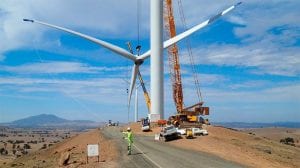Norway’s reputation as a global leader in electric vehicles is well deserved. This week, it was announced that Oslo city reached the milestone of 50,000 electric vehicles. It now has the highest per-capita representation of EVs in the world, and new car sales are now easily more than half electric in the country. This means 10% of the total fleet of vehicles in Norway is already zero emissions, and that number is climbing.
It’s an enviable position. The country is small, but it is way ahead of the curve. It is, of course, one of the world’s largest producers of oil, and has drawn much of its incredible wealth from the sale of fossil fuels. So there’s plenty on the opposite side of the ledger to criticise. But it is still significant that Norway is putting effort into making its own main export industry redundant.
Can it be replicated elsewhere? Perhaps in bigger countries in Europe, all trying to arrest the rise of the four-wheel drive? Maybe. But to figure that out, we need to dive into what made it work in the first place.
The right carrots
Coming from an energy background, my head is always in subsidies, but the incentives for EVs in Norway were always centred heavily on tweaks to the taxation system. It’s effective because everything is heavily taxed in Norway (I just came back from buying two bottles of wine and I can confirm this).
It has a long history. Pop group a-Ha began promoting EVs in the country in 1989. From 1990, EVs were exempt from purchase and import taxes. From 2001, they were exempt from the VAT (the equivalent of the GST). From 1997 to 2017, they didn’t get charged road tolls or ferry tolls. And electric vehicles are free to use bus lanes (though I’ve heard people complain that that now tends to clog up bus lanes, simply because there are so many EVs). The Norwegian electric vehicle association lists fifteen incentive schemes here, and they’ve all contributed to the rising share of electric vehicles within Norway’s fleet.
These tax cuts are set to be in place until the end of 2021, meaning the records will probably just keep being broken. This transition was far from organic. It was created and sustained by a set of conscious and significant policy decisions. Norway’s air is cleaner and transport emissions lower thanks to these specific policies.
The right chargers
Oslo launched a municipal charging infrastructure program in 2008, and the outcomes are clear. Most streets you walk down, you’ll see a charging point. They’re ubiquitous across the city, and it’s common to see a cable snaking out, plugged into the side of a nearby car. By 2011, Norway had 1,900 charging points. Today, the Norwegian charging database has 2,500 charging stations and more than 12,000 charging points. You can really tell how big this whole project is when the organisation that simply maintains the database of charging points says something this poetic on their site:
“Electrification of road transport is a sign that we are leaving the oil age and heading into an era in which renewable energy sources will transform our cars into «perpetual motion machines», powered by the wind that blows, the rivers that run, the sun that shines and the waves that beat against our shores. Our cities will be alive, free of noise and fumes”.
Progress is still accelerating. The government launched a program to feature two fast-charging stations every fifty kilometres, and every main road in Norway features at least one.
To read the full story on RenewEconomy’s electric vehicle dedicated site The Driven, click here…







